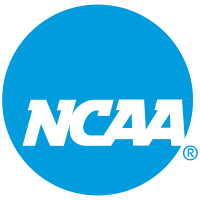A coach's video review challenge in women's basketball was approved by the NCAA Playing Rules Oversight Panel on Tuesday.
After a thorough discussion last month, the NCAA Women's Basketball Rules Committee voted to recommend the change for the 2025-26 season.
Under the rule change, the following plays can be challenged at any point during the game:
- Ruled out-of-bounds violations.
- Ruled backcourt violations.
- Whether a change in team possession occurred before the ruling of a foul where free throws would be involved.
- Whether a foul was assessed to the correct player.
Officials cannot initiate reviews on these calls, with the exception of whether a foul was assessed to the correct player.
Teams will not be required to have a timeout to make a video review challenge in NCAA women's basketball competition. However, a failed challenge will result in a technical foul for an excessive timeout.
The panel also approved an experimental rule in exhibition games for the 2025-26 season to allow coaches to make video review challenges on a foul charged to their team at any time during the game.
Other rules changes
- Setting the shot clock to 20 seconds when, following a dead ball, the offense is awarded the ball in its frontcourt.
- Eliminating the rule that jerseys need to be tucked in.
- Using excessive timeouts or playing with six players when the ball becomes live will become team technical fouls. These violations will count toward team fouls, and the team will be awarded possession at half-court following the free throws.
- Allowing players to complete a jump stop when their feet land approximately at the same time. This will be a legal move and will not be considered a travel. The NCAA Women's Basketball Rules Committee thinks this change can increase the accuracy on traveling rulings.
- Allowing defenders multiple one-hand (hot stove) touches on stationary players holding the ball or on a dribbler. These touches would be legal as long as they are not repetitive and do not affect the rhythm, speed, balance and quickness of the dribbler or reroute the offensive player.
- If a player competes in a game that the player should have missed due to a suspension, the player and the head coach will both have to serve a one-game suspension for the next scheduled game.




